#hong kong museum of history
Explore tagged Tumblr posts
Text






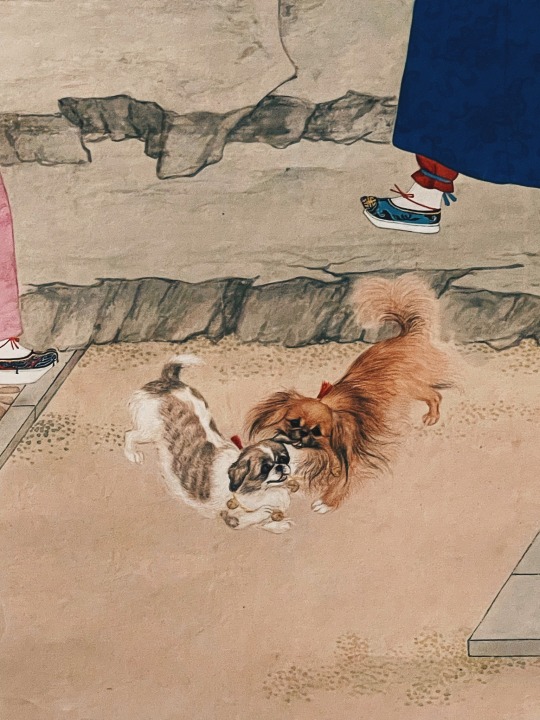
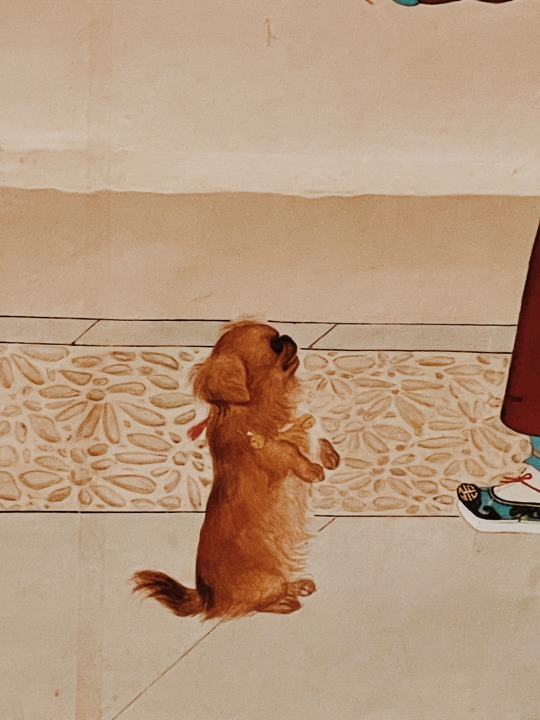


Part 2 of artifacts from the newly opened Yuanmingyuan / Old Summer Palace exhibition at the Hong Kong Palace Museum:
1 - Detail of a painting and one of “The Twelve Beauties”. I adore the linework and shading; it looks so modern. And look at those nails!
2 - Poems. The tiny writing!
3 - Detail of a painting of a Lantern Festival celebration including fireworks performances. I zoomed in on the Qianlong Emperor.
4 - A portable censer with dragons and clouds.
5 - Love the composition of this painting. Consort of the Qianlong Emperor and Yongyan.
6 - Set of seals of the Kangxi Emperor.
7 and 8 - Details of paintings. I zoomed in on these cute royal dogs playing with children. They reminded me of poor little “Looty,” the Pekingese who was taken by the British when they and the French destroyed Yuanmingyuan (she was found with four other Pekingese mourning and guarding the body of the emperor’s elderly aunt, who committed suicide when she heard the plundering outside) and given to Queen Victoria, who gave her that terrible name. She ended up living a lonely life, longing for her homeland, and, unlike the Queen’s other dogs, was buried in an unmarked grave.
9 and 10 - The exhibition’s last room, which described the destruction and ruin and Yuanming Yuan.
// (c) Jenny Lam 2024
#fashion#style#clothes#nails#chinese painting#art#photography#travel#travel photography#chinese#chinese history#history museum#history#art history#hong kong#museums#museum#photos#painting#dogs
4 notes
·
View notes
Text
When Zhou Fengsuo was looking for a space in New York to display his art collection, he couldn’t believe his luck when he stumbled across 894 6th Avenue in the heart of midtown Manhattan. The numbers of the address – 8946 – were the same as the date he wanted to commemorate: 4 June 1989. It was “unbelievable”, the former student leader marvelled.
That Zhou’s collection, which opened to the public on Friday as part of the June 4th Memorial Museum, ended up in such an uncanny location is the result of a concerted, decades-long campaign by the Chinese Communist party (CCP) to eradicate any remembrance of the 1989 massacre around Tiananmen Square anywhere in the world.
Having virtually eliminated 4 June gatherings in mainland China and Hong Kong, the CCP’s efforts to suppress the memories of that event have increasingly been felt overseas.
In the early hours of 4 June 1989, troops from the People’s Liberation Army rolled into Tiananmen Square, in the heart of Beijing, to disperse thousands of peaceful protesters who had gathered for weeks to demand political reforms. Hundreds of civilians were killed. The Chinese government has never fully acknowledged the massacre.
The opening of the June 4th Memorial Museum in New York was prompted by the closure of one in Hong Kong in 2021 after the imposition of the national security law effectively criminalised 4 June commemorations. But now people who try to light a candle much further from Beijing also encounter difficulties. When plans for the New York museum were announced last year, local Chinese community groups objected to them, accusing the organisers of being divisive.
The first venue the museum’s organisers approached turned them down without giving a specific reason. “We have to be very careful at negotiating [with venues] and be very explicit about our purpose,” Zhou said. That means “making sure that the other party is fully aware of the commitment needed”.
The museum plans to operate a visitor booking system. “We cannot open the door for anyone who wants to come in because we’re really worried they [the Chinese embassy] will send somebody,” said Wang Dan, another former student leader.
Shao Jiang, an exiled 1989 protester, has been helping to organise 4 June vigils in London since 2007. When the Observer tried to reach him by telephone in the days before this month’s event – a protest outside the Chinese embassy – the call was blocked.
Shao said this often happened in the run-up to 4 June. “If I order deliveries, they can’t contact me,” he said. “It’s quite normal, living in exile. Every year I face different difficulties.”
Activists have had to balance the desire to raise awareness of a fading memory with keeping out spies. In the past two years, Hongkongers have swelled the numbers at the London vigil. But attendees are often cautious, reluctant to remove their face masks or trust other people there.
“There are people who take photos at events that are critical of the CCP, including 4 June vigils,” said Yaqiu Wang, a senior China researcher at Human Rights Watch. “It’s never clear who those people are, but likely they are associated with the CCP, and taking photos is a way of intimidating participants. That is also a big reason why overseas students refrain from going to those events.”
In many places, vigils are shrinking. Peng Xiaoming, a Berlin organiser, said: “The number of attendees is reducing because of the Chinese government’s powerful propaganda.”
This includes threats to students that they or their families will face repercussions in China. “Most of the people who attend are old friends and classmates from the past,” Peng said.
Taiwan is alone in the Sinosphere in still holding a significant 4 June event. Hundreds gather to light candles at the Chiang Kai-shek memorial.
In recent years, new Hongkongers arriving in Taiwan have boosted the size of the vigil, and drawn attention to the links between the CCP’s behaviour in 1989 and in Hong Kong in 2019 and 2020.
Beijing sees Taiwan as being part of its territory – and any mention of 4 June is therefore highly undesirable to the CCP. “Every year, there is something to limit our activities,” said Wonka, one of the vigil’s organisers, who uses a pseudonym to protect her identity.
The challenges include vandalism of the event’s signage and, increasingly, fear from potential collaborators. This year, Wonka invited a troupe of 20 musicians to perform at the vigil but several refused because of fear of retaliation from the CCP. In the end, only four or five of the musicians agreed to perform.
“It’s very normal,” said Wonka. “They are afraid of the China issue.”
The Chinese embassies in the UK and Germany did not respond to a request for comment.
Liu Pengyu, a spokesperson for the Chinese embassy in Washington, said: “The Chinese government has already drawn a clear conclusion on the political disturbance in the late 1980s. The great achievements we made in the past 70 years since the establishment of the People’s Republic of China speak volumes about the right development path we have chosen with the endorsement by our people.
“The Chinese people will continue to advance along the path of socialism with Chinese characteristics.”
Additional reporting by Emma Graham-Harrison
The Observer, via The Guardian, June 3, 2023
#the observer#The Guardian#tiananmen square massacre#tiananmen vigil#Zhou Fengsuo#New York#USA#June 4th Memorial Museum#Tiananmen Square#Tiananmen Square massacre#history#conservation#politics#Shao Jiang#Wang Dan#Hong Kong#hong kong national security law#Human Rights Watch#activism#Taiwan#China#六四事件#天安門#八九六四#八九民運#天安門事件#1989 Tiananmen Square protests#8964
7 notes
·
View notes
Text
📍Hong Kong Palace Museum
Gallery 1: Entering the Forbidden City: Architecture, Collection, and Heritage
P1: Bell (bó zhōng) with stand--"Nán lǚ" pitch
Qing dynasty, Qianlong period, 1761
Bell: gilded copper alloy; stand: lacquer and gold on wood
P2: Chime (tè qìng) with stand--"Huáng zhōng" pitch
Qing dynasty, Qianlong period, 1761
Chime: jade (nephrite), gold; stand: lacquer and gold on wood
Gallery 2: From Dawn to Dusk: Life and Art in the Forbidden City
P3: Table screen with drawers for storing the Bight Pillars of the Orchid Pavilion
Qianlong period (1736~1795)
Zǐtán wood
Gallery 3: Brilliance: Ming Dynasty Ceramic Treasures from the Palace Museum, 1368~1644
P4: Architectural fitting in the shape of a dragon
Ming dynasty (1368~1644)
Earthenware with glazes
Gallery 4: The Hong Kong Jockey Club Series: Stories Untold - Figure Paintings of the Ming Dynasty from the Palace Museum
P5: Portrait of Táo Yuānmíng
Wáng Zhòngyù (active late 14th century)
Ming dynasty, late 14th century
Hanging scroll, ink on paper
Gallery 5: The Quest for Originality: Contemporary Design and Traditional Craft in Dialogue
P6:
1.(lower): Duck-shaped incense burner
Han dynasty (206 BCE~220 CE)
Bronze
2a.(left): Water dropper in the shape of a mythical beast
Qing dynasty (1644~1911)
Bronze with gold and silver inlay
2b.(right): Water dropper in the shape of a mythical beast
Ming dynasty (1368~1644)
Jade (nephrite)
3.(upper): Ram-shaped lamp
Han dynasty (206 BCE~220 CE)
Bronze
P7: Vase with spiral pattern
Imperial Workshops
Qing dynasty, Qianlong mark and period (1736~1795)
Blown glass
Gallery 6: Passion for Collecting: Founding Donations to the Hong Kong Palace Museum
P8: Headdress with phoenixes chasing a pearl
Liao dynasty (907~1125)
Gilt copper
Gift of Mengdiexuan Collection (Ms. Betty Lo Yan-yan and Mr. Kenneth Chu Wai-kee)
Gallery 7: The Hong Kong Jockey Club Series: Dwelling in Tranquillity - Reinventing Traditional Gardens
P9: Sky, Water and Land
Keith Lam
Generative visual and sound dataset, LED screen, stainless steel, bronze, four-channel audio installation
"In spring's serene embrace, tranquil water flows with grace; sky, water, and land above and below, boundless expanse azure aglow." -- Fan Zhongyan (989~1052), Yueyang Pavilion, Song dynasty
This artwork is inspired by the pavilions in Chinese gardens.
Gallery 8: Bank of China (Hong Kong) Presents: The Origins of Chinese Civilisation
P10: Relief with tigers and a human face
Shimao culture (4300~3800 BP)
Stone
📍香港故宮文化博物館
展廳1:紫禁萬象——建築、典藏與文化傳承
P1:甬紐橋口鎛鐘——南呂律(附架座)
清乾隆二十六年(1761年)
鎛鐘:銅鍍金;架座:木胎、金漆
P2:雲龍紋特磬——黃鐘律(附架座)
清乾隆二十六年(1761年)
特磬:碧玉描金;架座:木胎、金漆
展廳2:紫禁一日——清代宮廷生活與藝術
P3:蘭亭八柱八屜插屏
清乾隆(1736~1795年)
紫檀木
展廳3:流光彰色——故宮博物院藏明代陶瓷珍品
P4:琉璃龍吻
明(1368~1644年)
陶
展廳4:香港賽馬會呈獻系列:故事新說——故宮博物院藏明代人物畫名品
P5:陶淵明像
明,十四世紀晚期,王仲玉(活躍於14世紀晚期)
紙本墨筆立軸
展廳5:器惟求新——當代設計對話古代工藝
P6:
1.(下)鴨式薰爐
漢(公元前206~公元220年)
青銅
2a.(左)異獸形硯滴
清(1644~1911年)
銅胎錯金銀
2b.(右)瑞獸形硯滴
明(1368~1644年)
青玉
3.(上)羊式燭臺
漢(公元前206~公元220年)
青銅
P7:乾隆款纏絲玻璃撇口瓶
清乾隆(1736~1795年),清宮內務府造辦處
玻璃
展廳6:樂藏與共——香港故宮文化博物館首批受贈藏品展
P8:雙鳳戲珠紋冠
遼(907~1125年)
紅銅鎏金
夢蝶軒主人(盧茵茵女士和朱偉基先生)捐贈
展廳7:香港賽馬會呈獻系列:山林市城——遊歷舊園新景
P9:一碧萬頃
林欣傑,生成式視覺與音效數據組、LED屏幕、不鏽鋼、銅、四聲道聲音裝置。
「至若春和景明,波瀾不驚,上下天光,一碧萬頃」。
——宋•范仲淹(989~1052年)《岳陽樓記》
創作靈感源自中國園林建築中的「亭」。
展廳8:中國銀行(香港)呈獻:中華文明溯源(2024年9月25日~2025年2月7日)
P10:神人對虎紋石雕
石峁文化(距今4300~3800年)
石










1 note
·
View note
Text
What it meant to "do geology" in Hutton's time was to apply lessons of textual hermeneutics usually reserved for scripture [...] to the landscape. Geology was itself textual. Rocks were marks made by invisible processes that could be deciphered. Doing geology was a kind of reading, then, which existed in a dialectical relationship with writing. In The Theory of the Earth from 1788, Hutton wrote a new history of the earth as a [...] system [...]. Only a few kilometers away from Hutton’s unconformity [the geological site at Isle of Arran in Scotland that inspired his writing], [...] stands the remains of the Shell bitumen refinery [closed since 1986] as it sinks into the Atlantic Ocean. [...] As Hutton thought, being in a place is a hermeneutic practice. [...] [T]he Shell refinery at Ardrossan is a ruin of that machine, one whose great material derangements have defined the world since Hutton. [...]
The Shell Transport and Trading Company [now the well-known global oil company] was created in the Netherlands East Indies in 1897. The company’s first oil wells and refineries were in east Borneo [...]. The oil was taken by puncturing wells into subterranean deposits of a Bornean or Sumatran landscape, and then transported into an ever-expanding global network of oil depots at ports [...] at Singapore, then Chennai, and through the Suez Canal and into the Mediterranean. [...] The oil in these networks were Bornean and Sumatran landscapes on the move. Combustion engines burnt those landscapes. Machinery was lubricated by them. They illuminated the night as candlelight. [...] The Dutch East Indies was the new land of untapped promise in that multi-polar world of capitalist competition. British and Dutch colonial prospectors scoured the forests, rivers, and coasts of Borneo [...]. Marcus Samuel, the British founder of the Shell Transport and Trading Company, as his biographer [...] put it, was “mesmerized by oil, and by the vision of commanding oil all along the line from production to distribution, from the bowels of the earth to the laps of the Orient.” [...]
---
Shell emerged from a Victorian era fascination with shells.
In the 1830s, Marcus Samuel Sr. created a seashell import business in Houndsditch, London. The shells were used for decorating the covers of curio boxes. Sometimes, the boxes also contained miniature sculptures, also made from shells, of food and foliage, hybridizing oceanic and terrestrial life forms. Wealthy shell enthusiasts would sometimes apply shells to grottos attached to their houses. As British merchant vessels expanded into east Asia after the dissolution of the East India Company’s monopoly on trade in 1833, and the establishment of ports at Singapore and Hong Kong in 1824 and 1842, the import of exotic shells expanded.
Seashells from east Asia represented the oceanic expanse of British imperialism and a way to bring distant places near, not only the horizontal networks of the empire but also its oceanic depths.
---
The fashion for shells was also about telling new histories. The presence of shells, the pecten, or scallop, was a familiar bivalve icon in cultures on the northern edge of the Mediterranean. Aphrodite, for example, was said to have emerged from a scallop shell. Minerva was associated with scallops. Niches in public buildings and fountains in the Roman empire often contained scallop motifs. St. James, the patron saint of Spain, was represented by a scallop shell [...]. The pecten motif circulated throughout medieval European coats of arms, even in Britain. In 1898, when the Gallery of Palaeontology, Comparative Anatomy, and Anthropology was opened in Paris’s Museum of Natural History - only two years after the first test well was drilled in Borneo at the Black Spot - the building’s architect, Ferdinand Dutert, ornamented the entrance with pecten shell reliefs. In effect, Dutert designed the building so that one entered through scallop shells and into the galleries where George Cuvier’s vision of the evolution of life forms was displayed [...]. But it was also a symbol for the transition between an aquatic form of life and terrestrial animals. Perhaps it is apposite that the scallop is structured by a hinge which allows its two valves to rotate. [...] Pectens also thrive in the between space of shallow coastal waters that connects land with the depths of the ocean. [...] They flourish in architectural imagery, in the mind, and as the logo of one of the largest ever fossil fuel companies. [...]
---
In the 1890s, Marcus Samuel Jr. transitioned from his father’s business selling imported seashells to petroleum.
When he adopted the name Shell Transport and Trading Company in 1897, Samuel would likely have known that the natural history of bivalves was entwined with the natural history of fossil fuels. Bivalves underwent an impressive period of diversification in the Carboniferous period, a period that was first named by William Conybeare and William Phillips in 1822 to identify coal bearing strata. In other words, the same period in earth’s history that produced the Black Spot that Samuel’s engineers were seeking to extract from Dayak land was also the period that produced the pecten shells that he named his company after. Even the black fossilized leaves that miners regularly encountered in coal seams sometimes contained fossilized bivalve shells.
The Shell logo was a materialized cosmology, or [...] a cosmogram.
Cosmograms are objects that attempt to represent the order of the cosmos; they are snapshots of what is. The pecten’s effectiveness as a cosmogram was its pivot, to hinge, between spaces and times: it brought the deep history of the earth into the present; the Black Spot with Mediterranean imaginaries of the bivalve; the subterranean space of liquid oil with the surface. The history of the earth was made legible as an energetic, even a pyrotechnical force. The pecten represented fire, illumination, and certainly, power. [...] If coal required tunnelling, smashing, and breaking the ground, petroleum was piped liquid that streamed through a drilled hole. [...] In 1899, Samuel presented a paper to the Society of Arts in which he outlined his vision of “liquid fuel.” [...] Ardrossan is a ruin of that fantasy of a free flowing fossil fuel world. [...] At Ardrossan, that liquid cosmology is disintegrating.
---
All text above by: Adam Bobbette. "Shells and Shell". e-flux Architecture (Accumulation series). November 2023. At: e-flux dot com slash architecture/accumulation/553455/shells-and-shell/ [Bold emphasis and some paragraph breaks/contractions added by me. Presented here for commentary, teaching, criticisms purposes.]
89 notes
·
View notes
Note
Hi Sarah, I'm going to visit Chicago in a couple of weeks and when I think of Chicago I think of you. What would you recommend I visit/do?
Unfortunately, Chicago is not its best self for a couple months---while I maintain that the city is for all seasons, summer is undoubtedly when it's most alive. However, there are a couple things I will definitely recommend for the unseasonably warm spring traveler:
(1) Eat some food
A friendly word of warning: do not be tricked into eating Giordano's or Lou Malnotti's. Perhaps your companions might try to win you over with promises of Chicago-style hotdogs---do not be swayed! You must manfully resist! (Harold's Chicken is that good though, and if you're close to the one in Hyde Park, feel free to devour the three piece dinner of your choice. Cheap bottle of the too-sweet wine I preferred as an undergrad optional.)
A much better option is to find a place that serves whatever food you love, but does it really really well.
Do you like sophisticated twists on a brewpub menu? Try Moody Tongue in the South Loop
Or are you really more of a tapas person? Highly recommend mfk in Lincoln Park
Would you prefer something a little....meatier? My favorite steakhouse in Chicago is Tango Sur (though I would argue their empanadas are really the showstopper)
There's nowhere in the city that does Hong Kong-style barbecue like Sun Wah in Uptown---I just stopped by after the parade for the Lunar New Year, the duck is to die for.
Are you on the West Side? First of all, do not go to Big Star. I mean, it's fine, but....come on. I'd pick Forbidden Root instead, or head over to Pilsen for Rubi's if you can't survive without tacos.
There are so, so many different bars I would recommend. Chicago was the home of bootleggers for a reason, goddamn it. Still, if you can't get to Wang's (look, I like Violet Hour too, but sometimes you don't want to drink in near-darkness), Koval (the rare distillery in Chicago), or any of the many, many craft breweries we have in the city right now, you probably can stop by one of the many, many, many bars we have in Chicago, and get a drink anyway.
There are more---of course there are more!---but we don't have all day. So instead I will leave you with this bit of wisdom: don't eat at Navy Pier or anywhere too close to Lincoln Park Zoo. If you are at a bar, don't settle for a burger when sometimes, the chicken tenders are actually better. And if you absolutely must go somewhere for pizza, choose Pequod's.
(2) See a thing
Chicago has many things in it! So many things! A hundred thousand things! Unfortunately, I don't know what you're into, so I will just talk about them in general.
MUSEUMS: I am a devoted museum-goer, and Chicago has blessed me with an endless feast. There are the big ones, of course---the Field Museum of Natural History, the Adler Planetarium, the Shedd Aquarium, the Museum of Science and Industry, the Art Institute of Chicago. However, my favorites are smaller, more unique: the International Museum of Surgical Sciences, Intuit (though it's temporarily closed, more's the pity), the Institute for the Study of Ancient Cultures at UChicago, the Lincoln Park Conservatory. That's not even all the museums in Chicago! That's not even all the museums that I've been to. It's amazing.
EVENTS: I once joked that I was a person who needed to schedule her enrichment like a blue-haired senior, but the joke was on me---I am that person! Fortunately, Chicago supports me in this endeavor by publishing many, many different calendars of "what to do this week or weekend". Do you want to see something onstage? Well, here you go. How about some classical music? I have a trusty guide. What about non-classical music? Always go to the Chicago Reader for that. Are you thinking of catching a game? Well, we're still in spring training for the Cubs and Sox, but the Bulls are doing okay even if the Blackhawks aren't, and we've got soccer (male and female) now too!
(Unfortunately, the Chicago Sky aren't playing right now, they're my favorites.)
OTHER: Unless you are extremely efficient, coming here and eating good food, doing one other thing, is more than enough. I promise it is! However, if you have more time, I definitely recommend just---wandering around. The Loop in particular is great for this, because it's reasonably small and everyone there is busy doing things. Going places, talking on phones, getting into or out of ubers, protesting outside of the Daley center, etc. etc. It's amazing to watch, and the buildings are pretty neat too.
Or you could wait a couple months, and take the Chicago Architecture Boat Tour, which I think should be a requirement for all Chicagoans. Maybe even everyone alive in the world. Just saying.
(3) Walk along the lakeshore
Chicago offers many delights, but I really do believe that Lake Michigan and its vast expanse of water, sky and space, is a unique gift to the city. It is beautiful in winter, in spring, in storms, in sun. It is free. You can sit in the grass or the sand or amble along its broad paths for miles, looking at unexpected art installations and waving grasses and the way the beaches slope to the water; you can talk to a friend or watch bikers and joggers pass you by. In the summer, there are a dozen different stands offering warm elote or cold soda, and cheerful men on jingling bike carts that will sell you neon orange push pops. In the winter, there are still bikers and joggers but also Canada geese, and you can stare mournfully at the slate grey water and ponder existence.
It is the heart of Chicago. Nelson Algren called us an "October city, even in summer"; Carl Sandburg described us as a shirtless dude who gives great oral. Personally, I think of Montrose Beach in the setting sun of winter, the sand almost too cold to touch---and beautiful, beautiful, beautiful.

167 notes
·
View notes
Text
The Prince and the Metalhead (2)
Part of: Steve Deserves Good Parents, Actually
Debbie and Fester Addams One | Two | Three | Four Rick and Evelyn O'Connell One | Two | Three Harley Quinn One 10th Doctor and Rose One | Two (on the way!) Scooby Gang (there are plans for this one lmao, so plz be patient with me orz) Jedidiah and Octavius (from Night at the Museum) One Queen Clarisse Renaldi One | Two (you're here!)
I know I just posted part one but I've got Thoughts for this AU that include: Steve's first birthday in Genovia and then his 16th, his conversation with his grandmother about attending public school in America for his senior year, and then we get into him attending Hawkins High and meeting Eddie!
So, yeah, plans lmao
Anyway, if you see any typos, no you didn't ;)
------
"You'll have a rotating course schedule. Mondays and Wednesdays will focus on math and social studies. Tuesdays and Thursdays will be science and literature. Friday will be Royalty lessons and the history of Genovia. We can also include an elective, if you'd like."
Steve blinks, staring at Sue for a moment before glancing at Jonathan and Robin. Jonathan is looking through a book of photography and Robin is idly scratching behind Dart’s ears. "Will we all have the same elective?" Steve asks.
"Not unless Jonathan and Robin want to join you," Sue says, looking at Steve expectantly. She's got a pen at the ready to write down what he says, and it suddenly feels like a lot of pressure.
Is there a wrong answer here? Is there an answer that gets him sent back to his parents? He looks down, biting the inside of his cheek so hard he tastes blood. Before he can lose himself in his thoughts, a cold and wet nose presses against his hand. Steve blinks, smiling at Dart and picking her up to hold close. "What kind of electives are there?" he asks.
Sue hums softly, flipping to another page on her clipboard. "Possible electives include art, music, theatrical performance, physical education, equestrian studies, botany, and foreign languages, to name a few."
"I'll be taking photography lessons," Jonathan says, looking up at Steve and gesturing to his book.
Robin nods and leans back on her palms. "I'll be doing the physical stuff. Like learning how to fight and practicing ballet to improve my balance," she says, leveling a look at Steve that dares him to say anything about the ballet.
Steve wouldn't, though. He doesn't want to make Robin angry enough to ditch him. He looks down at Dart, thinking for a moment before asking, "Can I take more than one?"
"Of course, but you're limited to three for now," Sue says.
What would be the most helpful? Foreign languages, probably, since he'll definitely have to speak with ambassadors from other countries at some point. He should also learn something that can be shown off, a skill that he could pull out at functions to make his grandmother proud or distract guests.
"What language should I learn?" he asks.
Sue thinks for a moment, tapping her pen against her chin. "Mandarin. It's a business language, and we have close relations with a few representatives from China and Hong Kong. If you'd like to learn a Romantic language first, though, Spanish is good."
"I'll learn Mandarin," Steve decides, nodding once to himself. "And music. I want to learn to play...hmm...the piano."
With a nod, Sue writes his electives down. "Let me know if you'd like to add an elective later, Your Highness. In my opinion, though, your current courses will keep you properly challenged for now."
------------------------
Sue wasn't kidding about his academics being challenging. Steve struggles in math, muddles his way through science, drags himself through literature, and is ready to drop when he hits social studies. He'd ask the tutors to spend more time on topics, but Robin and Jonathan seem to have no problem keeping up, and Steve can't bring himself to disrupt their pace.
His Mandarin lessons are going just slightly better if only because the tutor seems to recognize that slower is better for him. After almost a month, he's starting to understand intonation and vocal variation better, and he can recognize a few characters on sight.
Piano lessons are also going well. His tutor there doesn't burden him with theory; she introduces the keys, shows him how to read sheet music, and then lets him choose songs to learn. Steve feels the most at ease when he's squinting at sheet music and slowly pressing piano keys into something recognizable.
The lessons he really looks forward to, however, are the ones for his Royalty Education. He gets to see his grandmother then, and she spends the whole day with him. Even better, something about this stuff just clicks. He's good at fixing his posture and memorizing silverware placement. He bows just right on his first try and his grandmother compliments his wave.
By the end of the lesson, she'll be smiling, her pride obvious, and take him for a walk in the gardens or to eat cookies in the kitchen.
"Royalty requires maintenance," Clarisse says, standing in front of Steve with relaxed shoulders. "You maintain your demeanor, your image, your knowledge of foreign dignitaries, your understanding of the people’s needs, and your humility. But you must also maintain your pride and your boundaries."
"That sounds like a lot," Steve says, idly tugging at the hem of his shirt.
"It can be overwhelming, but it becomes second nature in time," Clarisse explains, smiling reassuringly. "When you're royalty, you are constantly watched. Many eyes are kind or curious, but others are malicious, and you want to do everything you can to disappoint the malicious ones."
"How?"
"By acting like the Crown Prince you are."
"What kind of prince am I?" Steve asks, finally voicing the question that's been lingering since these lessons started. What kind of prince does his grandmother want? What kind of prince would best serve the people? What kind of prince will be so loved by all that nobody could even think of thinking about getting rid of him?
Clarisse hums, thinking for a moment. "I suppose a good one," she says, her slight smile telling Steve that she's only lightly teasing. "My hope is that you'll be kind and competent. You will make Genovia prosperous without compromising tradition. You won't allow politics to stand in the way of doing what's right by the people of Genovia. But this is a tiring job, so I hope you'll learn how to balance your duties with relaxation."
It's a lot, but Steve can do it. He can be that kind of prince, especially for the country and grandmother that's offered everything he's ever wanted and more. He nods once. "Okay," he says, "What do I need to learn, then?"
Clarisse smiles fondly at him. "Let's start by reviewing Genovian history. Only by knowing the past can you face the future."
With that, she places a book on Steve's desk and doesn't wait for him to open it before telling him about Genovia's founding.
------------------------
Steve has weekends off from classes, which leaves him with more free time than he knows what to do with when he doesn't have to clean a house or make his own meals. So, he's bored, and telling Robin that he was bored was a huge mistake after she suggested riding bikes around the garden only to learn Steve didn't know how.
She'd insisted that he should learn, insisted that Clarisse be the one who teaches him, and insisted on hearing no objections.
And now he's here, standing in front of Clarisse's desk and staring down at his feet as she finishes writing something on the paper in front of her. Joe is standing just to her right, hands behind his back.
"Okay," Clarisse says, gently placing her pen on the desk before looking at Steve with an encouraging smile. "What did you want to ask me, Steve?"
Steve bites the inside of his cheek, takes a deep breath, and looks up. "Well, um, Robin wants to ride bikes, but I don't know how," he says.
"Well, that's easily fixed," Clarisse says, reaching for a phone at the corner of her desk. "I'm sure a member of staff is free to teach you."
Before she can pick up the phone, Steve finds himself blurting out, "Well, I...I was hoping...you could teach me."
Clarisse freezes, blinking twice with confusion before looking at Steve. "You want me to teach you?" she asks. When Steve nods once, she sighs softly. "A queen does not ride bikes. Besides, I have too much work to complete. Perhaps I could accompany you for a walk this evening to make up for it."
Despite himself, despite bracing for rejection, it still hurts. In the three months he's been in Genovia, Clarisse has agreed to just about every request he's made. Every held breath as he waits for cruel words has been released with unprecedented relief when none came. Even when he broke something---a priceless vase, according to Jonathan---his grandmother had simply surveyed the damage, thanked him for being honest, and asked him to avoid kicking soccer balls in the presence of priceless vases in the future.
Perhaps Steve has gotten too comfortable. He shouldn't be pushing like this. If he wants his grandmother's affection, he should know when to hold himself back.
So, despite the unfamiliar urge to ask again in case Clarisse might change her mind, Steve nods once. "I look forward to walking with you, Grandmother," he says, his voice quiet. He glances up, waiting long enough to see Clarisse's smile before turning on his heel and leaving the office as quickly as he can.
Clarisse watches him go, her head slightly tilted as the door closes silently behind Steve. She nods once, glad that Steve is sensible enough to understand things like work and propriety, and picks up her pen once more.
"If I may speak freely, Your Majesty?" Joe asks.
"At this point, Joe, you may as well assume the answer is yes."
"With all due respect, Your Majesty, and please pardon my French, my experience has been that assuming makes an ass out of you and me."
It takes a moment for Clarisse to understand the joke. When she does, she can't help her amused smile. "Fair enough," she says, "Go ahead, Joe."
"Do you remember what I said about being Steve's grandmother?"
"Yes, of course."
"Perhaps now is one of those moments where being a grandmother is more important than being a queen. His Highness does not ask for much, and he is not the kind to ask more than once, even if he really wants something. I imagine it took a significant amount of courage to ask you to teach him in the first place."
"Are you suggesting that I...I risk making a fool of myself for all to see?" Clarisse asks.
"I am suggesting you spend time with your grandson, who asks very little of you because he does not believe he can ask for anything."
Clarisse is silent a moment, letting Joe's words process and settle in her brain. Finally, she sighs and gestures to the papers on her desk. "I have work to complete," she says.
"Your Majesty, editing these proposals was on your schedule two weeks from now. You are ahead of your work. A break would not be unreasonable or unwarranted."
Well, when he puts it like that.
Clarisse sighs, leans back in her chair, and looks up at Joe. He's still staring at the door, giving no indication that he feels her eyes on him, but she knows he does. "Have a groundskeeper retrieve bikes and safety gear and meet us in the garden," she says, standing from her chair and bracing herself to look like an utter fool.
Her apprehension fades away fifteen minutes later. It can't hold last when she sees Steve's surprised and delighted expression at her presence. As she helps him put on knee and elbow pads, shows him how to pull the helmet's strap tight, and holds the bike steady as he sits on it, Clarisse decides a little foolishness is perfectly fine (necessary, even) if it will keep the smile on Steve's face.
------------
Tag List (let me know if you'd like to be added to future parts!)
@y4r3luv, @potato-of-the-lord,
#stranger things fic#steve harrington fic#princess diaries crossover#queen clarisse renaldi#modern royalty au#future steddie#robin buckley#jonathan byers#the party's parents#my writing#anybody else ever have that experience where the first time you realize that somebody won't make you feel guilty for asking for things#you get way in your head about not asking for the one (1) thing that will ruin it all for you#so every time you ask for something new you're bracing to take the request back as quickly as you can#just me?#aight then lmao#to absolutely nobody's surprise i am projecting on steve harrington#if you made it this far in the tags#you deserve a cookie lmao
165 notes
·
View notes
Text

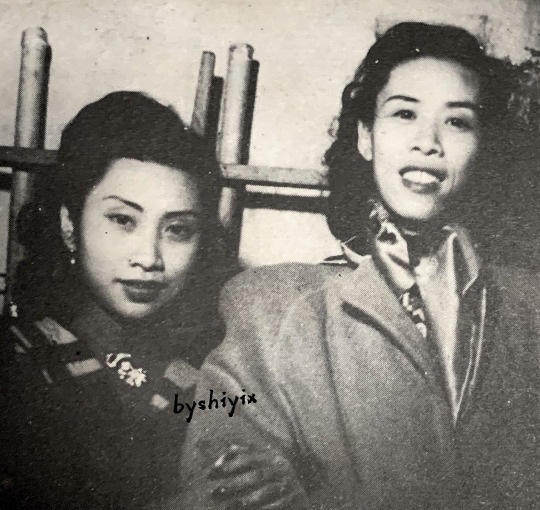
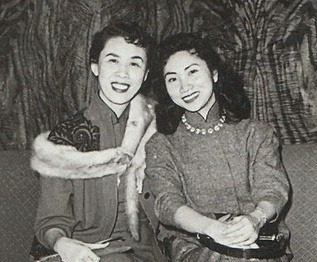
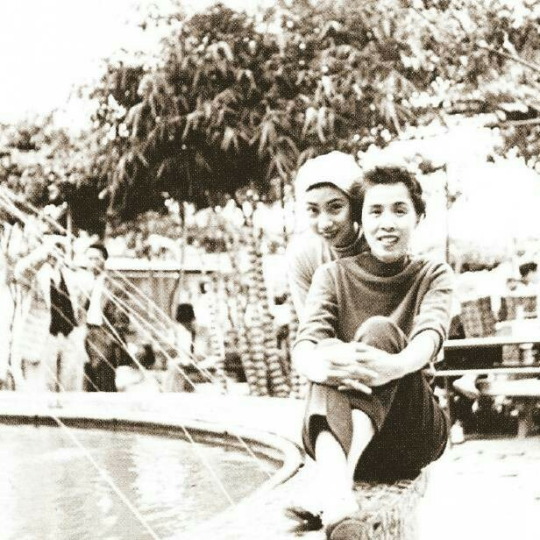

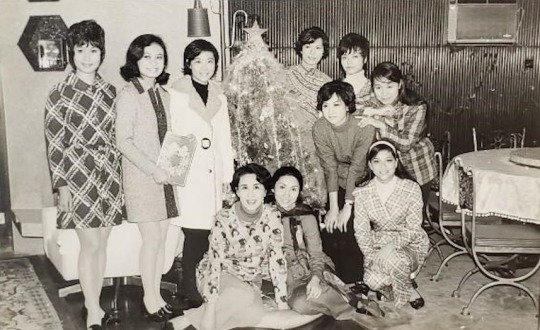

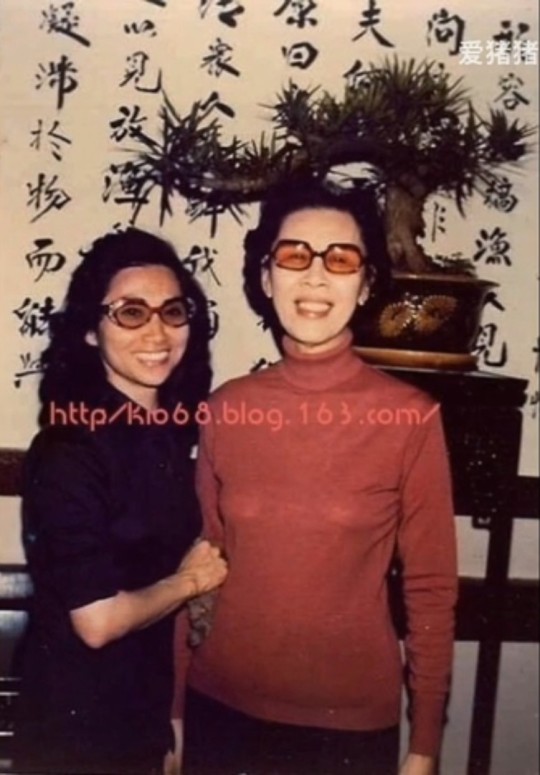
Female Queer Icons of Hong Kong // Yam Kim Fai (任劍輝) and Pak Suet Sin (白雪仙)
Photo 1: Promotional photo for 1955 contemporary movie The Model and the Car (玉女香車) (no video available) (Source: LCSD Museum Collection Search Portal)
Photo 4: Photo from Sin Fung Ming Opera Troupe's 1958 trip
Photo 5: Photo from a 1962 newspaper feature on Yam, Pak, and others at their (?) summer villa in Central, Hong Kong
Photo 6: Christmas celebrations with Yam, Pak, and their protégés of the Chor Fung Ming Troupe
Far and away the most iconic duo in Cantonese opera, Yam Kim Fai (任劍輝) and Pak Suet Sin (白雪仙) – commonly referred to simply as Yam-Pak (任白) – were famed for their partnership both on and off the stage… Click below to learn more!
Edit on 28/07/2023: Updated to link to a photo of the entrance to the Hong Kong Heritage Museum’s Pop Culture 60+ exhibit, and to add information regarding Yam and Pak's marriage status.
Iconic? How?
Yam-Pak are the face of Cantonese opera; you can't talk about the latter without mentioning the former. It's to the point where a gigantic picture of them graces the entrance to the Hong Kong Heritage Museum’s permanent exhibition on Hong Kong pop culture’s evolution across the past 60 years (“Hong Kong Pop 60+”) - they are the first thing you see upon entering!
Best known as the originators - with Yam playing the male leads and Pak the female leads - of five masterpieces of Cantonese opera, namely:
1. Princess Cheung Ping (帝女花) 2. The Legend of the Purple Hairpin (紫釵記) 3. The Dream Tryst in the Peony Pavilion (牡丹亭驚夢) 4. The Reincarnation of Lady Plum Blossom (再世紅梅記) 5. Butterfly and Red Pear Blossom (蝶影紅梨記) (Note: Princess Cheung Ping, Purple Hairpin, and Butterfly and Red Pear Blossom were made into abridged movie versions, with the Sin Fung Ming troupe members reprising their roles from the theatre productions. Also, the "Fragrant Sacrifice" (香夭) duet from Princess Cheung Ping (movie clip) is one of - if not the most - famous songs in Cantonese opera.)
Yam and Pak were the leading pair and co-founders of the legendary Sin Fung Ming Opera Troupe (仙鳳鳴劇團; 1956-1961), which is widely held to have pushed Cantonese opera forward as an artform due to Pak and scriptwriter Tong Tik Sang’s (唐滌生) emphasis on poetic libretti and adapting source material from Chinese literature and history. (Note: it has been common practice since the 1930's for Cantonese opera troupes to be founded by key actor(s).)
They were also very active in the Hong Kong film industry in the 1950's, being paired in over 40 movies together across roughly 8 years. One of those – the aforementioned Butterfly and Red Pear Blossom (蝶影紅梨記) – is the sole Cantonese opera movie on the Hong Kong Film Archive’s 100-Must See Hong Kong Movies list (IMDB list / archived version of the official PDF). It's a well-deserved inclusion - check out this beautifully-shot dance scene.
Even their post-retirement activities had a significant effect on the industry! In the early 1960’s, they held auditions for prospective students and provided - for free - systematic, hands-on training to those who passed; Yam and Pak even hired other veterans to teach skills they personally were not as familiar with. Prior to this, apprentices were expected to learn primarily from observing their masters, and to pay handsomely for the privilege. Yam-Pak’s methods proved exceedingly effective: the Chor Fung Ming Opera Troupe (雛鳳鳴劇團; 1963-1992) starring their apprentices reigned supreme in the 1970’s-1980’s. Following this success, Cantonese opera institutes - most notably the major 1900s-era guild, the Chinese Artists Association of Hong Kong (八和會館) - started to offer systematic coaching to young hopefuls in the 1980's.
Okay, so why are they queer icons specifically?
The lazy answer is that they're queer icons because nearly all of Yam's roles were male, so Gender is involved by default, and since most hit Cantonese operas of the time were romances, that means you get to see two female actors performing being in love onscreen (and also on stage, but there aren't any video recordings from back then). So far, so Takarazuka Revue.
Female actors playing male roles in Cantonese opera To give some context, each Cantonese opera performer specialises in one of four major role-types, and Yam was a sung (生) - i.e. an actor specialised in playing standard male roles. Female sung were fairly common in the 1910's-1930's due to women being banned from performing with men during that period, but when the ban lifted in the mid-1930's, many troupes shifted towards cis-casting. Yam was pretty much the only one whose popularity survived the transition. Just take a look at the huge number of Cantonese opera movies produced during the 1950’s-1960’s – you’ll be hard-pressed to find a female sung other than Yam, let alone one with top billing. Happily, thanks to Yam's immense popularity, her profilic film career (over 300 movies!), and the prominence of Sin Fung Ming works in the Cantonese opera canon, there has been a resurgence in female sung which endures to this day. Two noteworthy examples are Yam's protégé Sabrina Lee/ Loong Kim Sang (龍劍笙) - a star in her own right - and Joyce Koi/ Koi Ming Fai (蓋鳴暉), one of the biggest names still active in the industry. (Note: perhaps due to cinema being more "realistic" in nature, Yam's early movies often involved her playing female characters cross-dressing as men, including in some Cantonese opera movies. However, she received increasingly more male roles as her fame grew, and from the mid-1950's onwards she was playing male characters onscreen nearly exclusively-- even in non-Cantonese opera movies! See Photo 1 above.)
What sets Yam and Pak apart is that they were particularly known for their chemistry. Long before Sin Fung Ming's formation in 1956, the advertising copy for their first Cantonese opera movie together - Frolicking with a Pretty Maid in the Wineshop (酒樓戲鳳, 1952) - declared "Only this movie has Yam-Pak flirting on the silver screen" (source - 華僑日報 1952/05/23-26). And indeed, they were popular for their flirtatious duets: their Cantonese opera works invariably contained at least one, and such scenes made it into some of non-Cantonese opera (i.e. "contemporary") movies too. In fact, there are not one but two contemporary movies where Yam and Pak's characters are not paired up and yet still sing a duet together in such a way that their significant other(s) become convinced that the two are in romantically interested in each other - see 1952's Lovesick (為情顛倒) and 1956's The Happy Hall (滿堂吉慶) - a weirdly specific situation which doesn't crop up in the other, non-Yam-Pak movies I have seen.
Speaking of contemporary movies, let's talk about a certain plotline that keeps cropping up in works featuring the both of them and where Yam plays a woman! Six of the eleven movies which fit that criteria involve Yam's character cross-dressing as a man (a common characteristic across Yam's handful of female roles), and Pak's character falling for her. Nothing ever comes of it, of course, but, um. It was certainly a trend. Actually, even their very first movie together - 1951's Lucky Strike (福至心靈) - falls into this category.
Such storylines, and the emphasis on their chemistry, are particularly interesting given that both Yam and Pak remained ostensibly unmarried throughout. This was unusual for female performers of their stature, who tended to wed in their twenties, often to fellow-actors or wealthy men (e.g. Hung Sin Nui/紅線女, Fong Yim Fun/芳艷芬, and Tang Pik Wan/鄧碧雲)... In contrast, by the time Yam-Pak retired from the stage in 1961, they were both over 30 years old and without husbands.
Also, did I mention they were popularly believed to be living together? There doesn't seem to be any conclusive evidence either way... although it's a little strange that separate newspaper pictorials depicting "Yam at home" and "Pak at home" seem to be of the same location... however what is conclusive is that they did spent a lot of time together offstage. Pak has talked about how when they had no guests over, Yam would watch TV by herself while Pak was in the living room (source - p93), and protégé Mandy Fung/ Mui Suet Sze (梅雪詩) has said that Pak would sometimes cook for Yam at home (source - 03:53~). They would also celebrate birthdays, New Year's, and Christmas together (see Photo 6 for an example of the latter).
Shortly after Yam's passing in 1989, Pak set up the Yam Kim Fai and Pak Suet Sin Charitable Foundation (任白慈善基金) to support the arts and provide welfare for the elderly. In 1996, Pak made a large donation to Hong Kong University, resulting in one of the buildings being renamed Yam Pak Building (任白樓) in thanks (source).
Thanks for reading! Please feel free to DM me or send an ask if you have any questions, or are just interested in learning more.
If you made it here, have this bonus piece of trivia - Yam and Pak were also well-acquainted with Hong Kong's preeminent queer icon, Leslie Cheung (張國榮), who was a massive fan of theirs. Sadly there don't seem to be any pictures of them before Yam's passing, but here's one of Pak (centre) having afternoon tea with Cheung (left) and his long-term romantic partner Daffy Tong (唐鶴德) (right) at the Cova cafe in the Pacific Place shopping mall.
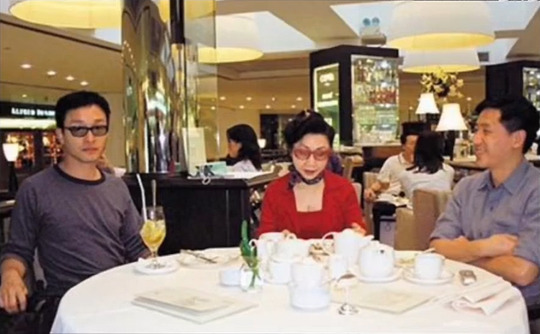
#wlw recommendations#sapphic#lgbtq#asian lgbtq#hong kong#theatre#cantonese opera#chinese opera#yam kim fai#leslie cheung#pak suet sin#yampak#yambak#pak sheut sin#bak sheut sin#hong kong queer icons#not me hastily adding tags because i keep forgetting certain ones
201 notes
·
View notes
Text
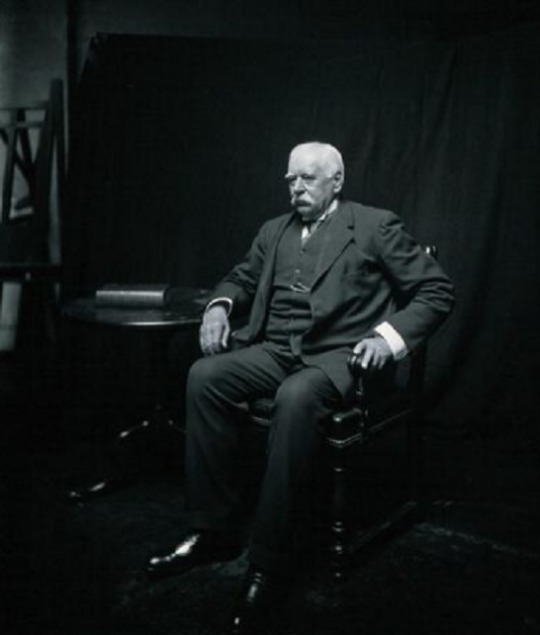

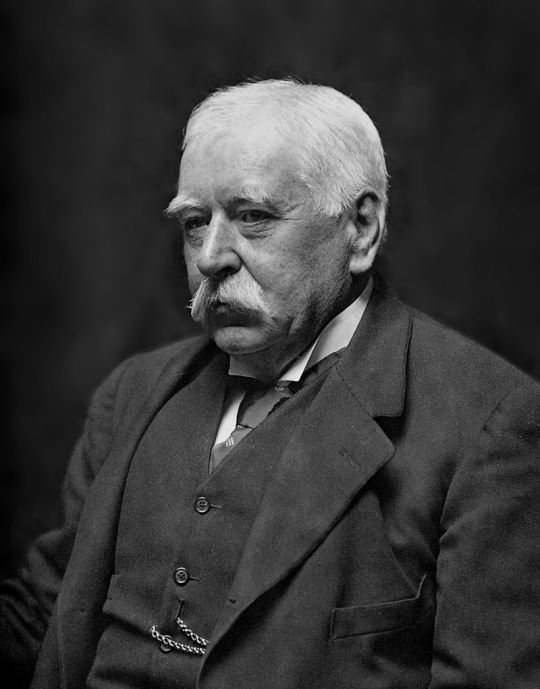
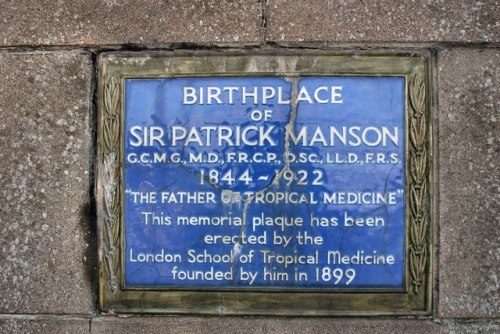
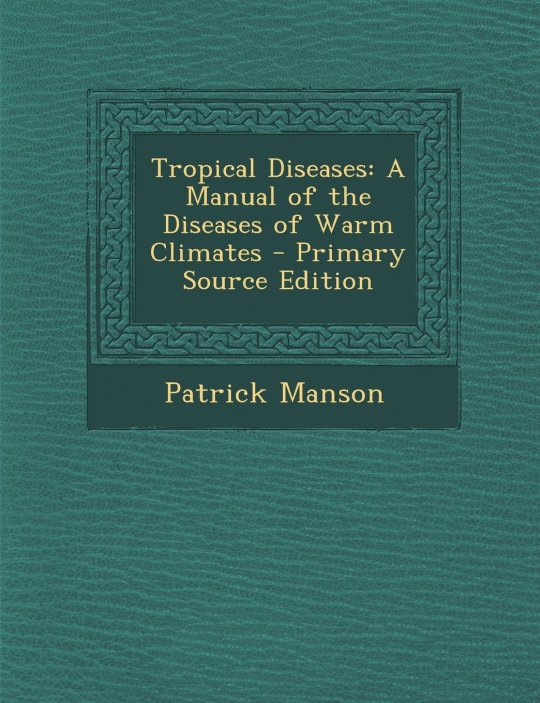
Scottish physician Patrick Manson was born in Oldmeldrum in Aberdeenshire on October 3rd 1844, he is regarded as founder of the field of Tropical Medicine.
Patrick Manson was a son of Alexander Manson and Elizabeth Livingstone Blaikie, his dad was the manager of the local Linen Bank, and Laird of Fingask. His mother was distant relative of the famed Christian missionary-explorer David Livingstone.
He developed a childhood passion in natural history, fishing, shooting, carpentry, mechanics and cricket. Among his Presbyterian-Christian family, he showed excellent memory for memorising church sermons at the age of 5 years. In 1857 his family moved to Aberdeen, where he started his formal education at Aberdeen’s Gymnasium School and continued at West End Academy.
Aged 13 1859 he was apprenticed to Blaikie Brothers “Iron masters” however struck down by a form of tuberculosis he had to leave this job, the ironworks loss would be medicines gain, a year later he entered Aberdeen University where he completed medicine course in 1865 however aged only nineteen and was underage for graduation, so he visited hospitals, museums and medical schools in London. Finally of age he formally graduated in October 1865, and was appointed Medical Officer at Durham Lunatic Asylum.
The following year he gained his Master of Surgery and his Medical Doctorate.
Immediately after qualifying Manson travelled to Formosa (now Taiwan) to take up a post as a medical officer to the Chinese Imperial Maritime Customs. In 1871 he transferred to Amoy, on the Chinese coast, and 13 years later he moved to Hong Kong, where he practiced from 1883 to 1889. Manson developed an early interest in tropical diseases, and in particular in the role of parasites in their transmission. His initial studies were on filaria, a small parasitic worm that causes elephantiasis: and he was able to show that mosquitoes had a key role in transmitting the worms and spreading the disease.
Manson’s discovery helped inform the work of Sir Ronald Ross, who was studying the transmission of malaria in India at the time. While in Hong Kong, Manson helped found the Hong Kong College of Medicine for Chinese, which later formed the nucleus of the University of Hong Kong. He was also the first person to import dairy cattle from Scotland to Hong Kong, starting a dairy industry there supplying hygienic milk affordable by pregnant women, children and patients.
Manson moved to London in 1889 and in 1897 was appointed to the post of Chief Medical Officer to the Colonial Office. Amongst his early initiatives was the foundation of the London School of Hygiene & Tropical Medicine, which opened in 1899. He was elected to the Royal Society in 1900, knighted in 1903 and in the following year awarded an honorary Doctorate of Science by the University of Oxford. In 1907 he became the first president of the Royal Society of Tropical Medicine, and retired from the colonial office in 191
Retiring in 1912 to fish in Ireland Manson returned to London at the beginning of the First World War. Despite crippling attacks of gout he continued to take a lively interest in medical education.
He died in London in 1922 at the age of 78 and is buried at Allenvale Cemetery in Aberdeen.
10 notes
·
View notes
Text
who up thinking about iggychu about 1980-90s iggychu the start of discussions about the handover of hong kong did you know the sino-british joint declaration was signed december 19, 1984 just in time for christmas wait what if they rekindled their relationship over diplomatic visits and had to balance their personal lives with their political ones it wouldn't be easy but it would be beautiful and every few chapters there'd be a historical flashback detailing the rise of tensions that led up to everything and how powerless these characters are before the course of history and oh my god 🥹🥹🥹🥹🇨🇳🇨🇳🇬🇧🇬🇧🇨🇳🇬🇧🇨🇳🇨🇳🇬🇧🇬🇧🇨🇳🇨🇳🇬🇧🇬🇧🇨🇳🇨🇳🇬🇧🇨🇳🇬🇧🇬🇧🇨🇳🇬🇧🇨🇳🇬🇧 and all the chapters are named after songs by the smiths i already know shoplifters of the world is gonna take place in the british museum and the last chapter is gonna be there is a light and it never goes out and i have one planned for sweet and tender hooligan and barbarianism begins at home UGH ITS PERFECT sorry guys i needed to get this out there
9 notes
·
View notes
Text

( gemma chan . cis woman . she/her ) — blasting the four seasons: winter by antonio vivaldi down main street we’ve spotted HERA LEUNG sporting their imperial jade ring . the forty1 / three hundred & eighty5 year old VAMPIRE who’s been in town for ten years often can be seen coming and going from portum , enjoying a drink or two at the old haunt , searching for pieces to add to her art collection , or working as a DIRECTOR at PORTUM ART MUSEUM . people say they display sophisticated and unyielding traits, but we rather trust their vibes: red bottomed heels clicking against the pavement , the sound of typing , a casual air of nonchalance that never seems to go away , vintage wines saved for special occasions . also, we’ve heard they love COLLECTING VINTAGE AND RARE WINES & LIQUORS ! aren’t they fascinating ?
[ ✰ ] WANTED & ESTABLISHED CONNECTIONS ( WIP ).
penned by HECATE ( she/her , 21+ , pst )

001. ↻ BASICS .
[ ✰ ] full name: wong mei ling [ ✰ ] alias/nickname(s): hera leung [ ✰ ] age: 41 ( physically ), 385 ( mentally ) [ ✰ ] date of birth: 01/16 [ ✰ ] place of birth: imperial city, beijing, china [ ✰ ] ethnicity: chinese [ ✰ ] nationality: american, british ( formerly ), hong konger ( formerly ), china ( formerly ) [ ✰ ] gender: cis woman [ ✰ ] pronouns: she/her [ ✰ ] orientation: bisexual / biromantic [ ✰ ] language(s) spoken: mandarin, cantonese, english, latin, greek, french [ ✰ ] mbti: ENTP [ ✰ ] element: fire [ ✰ ] western zodiac: capricorn [ ✰ ] character inspiration: shiv roy ( succession ), ah toy ( warrior ), blair waldorf ( gossip girl ), emma frost ( marvel comics ), tegan price ( how to get away with murder )
002. ↻ BACKGROUND .
NOTE: this is a quick summary / tldr of hera's background . for a more detailed bio , please CLICK HERE !
( tw: mentions of death ) hera leung was born wong mei ling in the mid-seventeenth century as the daughter of an emperor and his favored concubine . she’s born a fiercely resilient figure with life defined by ambition , loss and in essence , transformation . she’s forced to flee to hong kong with her mother and grew up in a world where power was everything . after suffering the devastating loss of her loved ones , mei ling was slowly starting to move on . she’d unknowingly fallen in love with a vampire who eventually transformed her while she was on her deathbed . now immortalized as hera , she’s forced to embrace this new identity . she travels through europe and ultimately settles in america where she makes quite a name for herself in the supernatural community . and over centuries , hera’s experiences have hardened her . in her pursuit of power of influence , she’d garnered enemies and after barely surviving an ambush , she finds herself in the town of portum .
003. ↻ HEADCANONS .
NOTE: this is a work in progress so more will be added at a later time !
established herself as a figurehead in san francisco’s supernatural community and became a benefactor to various tong organizations in chinatown
went to college some point in the 19th century and took multiple classes to get herself degrees in history , chinese literature , art history and anthropology
hera still occasionally made trips back to china and hong kong . at some point , she became an urban legend among villages as a virtuous figure that helps the town every now and again
extensive knowledge of chinese art and antiquities. probably even knew some of the artists tbh !
speaks with a slight english accent due to living in hong kong for most of her human life and learning english
prior to living in portum was living in new york and posed as the head curator at the met
7 notes
·
View notes
Text

The trouble with collecting merch is it’s difficult to stop once you start. This Jingsu enamel pin is by the prolific 长风万里, who is responsible for some of the most iconic NiF pins (check out the weidian store for a partial selection). Like many fan-made pins, it’s a re-rendering of a scene from canon, in this case episode 52 [x], where Jingsu look on as thunder and wind portend the storm brewing on the horizon after Princess Liyang has agreed to present Xie Yu’s confessed crimes at the Emperor’s banquet.
The pin emphasizes the storm in both design (bamboo leaves scattering in the wind) and name: 风雨同守, loosely enduring the tempest together. As for why the image has been transposed onto a tattered scroll, the pin maker said the inspiration came from rubbings/拓印 and elaborated some more:
Personally, I think of this as an excavated artwork (with the surface damaged in its old age) that was created out of Jingyan’s longing. As if Jingsu actually existed in history and will live on for a long, long time. 我自己把这个当做是一件出土的画作(年岁久远画面有所破损),是景琰怀念所做。就好像历史上真有他们的存在,靖苏真的来日方长。
Historically, rubbings not only create an impression of existing artwork but are themselves artworks that take skill and patience. The typical process starts with adhering paper to a stone carving, then ink is dabbed to the paper such that the flat surface takes on the color of the ink while carved areas remain white (here’s a process video). Collecting rubbings was a popular pastime of the literati, and rubbings of good calligraphy were especially in demand for study and appreciation, serving a similar purpose to block printing in allowing many people to see replicas of an original. The originals may have also come from a non-stone medium: some artworks originally on paper or fabric were replicated onto stone so that rubbings could be made and collected [x]. Nowadays, ancient rubbings are valuable artifacts, especially in cases where the carving has been lost.
The rubbing influence is very clear in the second version of the pin, here juxtaposed against one of its inspirations:
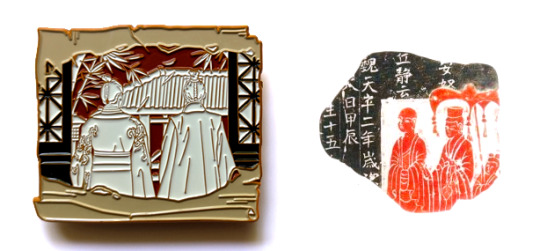
Though the text on the right rubbing says it’s from the Tianping Era of Eastern Wei, Year 2/魏天平二年 (535 CE), which is contemporaneous with the Liang dynasty that loosely inspired the fictional NiF Liang, I couldn’t find an actual historical artwork corresponding to this rubbing, and the mass antique market is flooded with fabrications (it’s also thoroughly possible I simply failed to find the original). But here’s a real fragment of a stone Buddhist votive tablet and its rubbing that’s now at the Art Museum of the Chinese University of Hong Kong [x]:
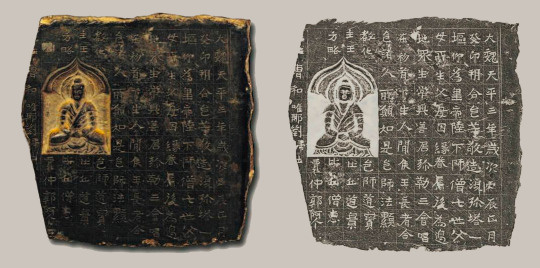
The text says that this was made in Tianping Era, Year 3, one year after the one above, and describes the building of a Buddhist pagoda in offering, which was a common practice at the time. This monochromatic rubbing style was also quite typical; though both black ink and red ink (cinnabar-based) rubbings existed separately, they were not really seen in combination in a single rubbing until much later. What is believed to be the only surviving book of bicolor rubbings before the modern era was made in the Qing dynasty around the 1800s and was itself a copy of a lost multicolor work from the same dynasty [x].
In this context of transference of art and meaning between mediums, it’s all too easy to imagine a backstory for this Jingsu scroll: first there was a stone carving, close enough to the actual scene that the artist must have worked from Jingyan’s memory of that day. Instead of the more common approach of carving the outline or the background, the artist decided to carve the foreground so the figures were sunken into the stone. And later, a rubbing was made and mounted onto a scroll, buried and excavated, then finally rendered from fiction to reality in the form of an enamel pin. Each creation is an act of remembering and reinventing, of placing yourself in the observer’s shoes, of stoking the flames of the original story—the fire burns on through metaphorical wood replaced over the centuries, its appearance ever-changing, its core not forgotten.

That’s enough of reading too much into things—I also like the pin on its own. One thing that 长风万里 does well is not just sell pins but also communicate the entire behind-the-scenes process with the QQ group, which is several months’ worth of iterations that I find at least as interesting as the final product. For this pin, you can trace through chat logs how the pin evolved all the way from the original concept sketch to the pieces of metal that fit in your hand (thanks to 长风万里 for letting me share the draft versions here):

Once the pin maker comes up with an idea and decides to go for it, the initial sketch is given to the commissioned artist (this pin was drawn by Forwrite, on weibo and lofter) along with reference images. The artist turns these into a line drawing following the design rules of enamel pins (each block of solid color should be fully enclosed by lines, for example). Some artists will color in the line art while other pin creators commission only the line art and fill in the colors themselves. The final colors are limited to the available palette at the factory chosen to make the pins, and once the color vector art is handed to the pin factory along with instructions on detailing and finishes, the physical manufacturing process begins in earnest (this could be the subject of its own long post).
You may have noticed that there are some color changes from the vector design to the physical pins, most notably the sky in the top pin. This came about as a serendipitous accident where the factory colored the sky of the sample pin dark blue instead of the requested sunset yellow, but the pin buyers active in the group chat liked the dark blue enough that it was kept as the final color. The light grayish blue variant ended up being chosen for the backing card/背卡 instead:

Though backing cards are nominally named for their purpose in supporting the pin, practically no one sticks their pins through these cards in Chinese fandom; instead, collectors generally buy cases and books to keep each piece in pristine condition. And so unlike utilitarian cards that are meant to serve as a background to the pin, fully designed backing cards that stand on their own are very much a thing. The card also adds back in the iconic Jingsu lines that were in the original concept sketch, I want to choose you, Your Highness Prince Jing/我想选你靖王殿下 from Mei Changsu and Sir and I are as one person/先生与我如同一人 from Jingyan.
And now for the last part of the merch package that comes with the pin: the wooden piece on the left is an inscribed bamboo name slip/名刺 meant to resemble what MCS might have presented Jingyan when he visited his manor in episode 9 [x]. This was a preorder bonus to encourage buyers to get on board early, since the upfront costs to commission the artist and get a sample made at the factory are a significant portion of the overall costs (if not enough people preorder, the pin is canceled and the payment refunded, and the pin maker has to take the loss of at least the artist’s fees).
Name slips were the ancient analogs to modern business cards and an important tool of connection building in the ancient bureaucracy. The tradition of presenting a slip before you visit someone’s residence, especially if you’re lower in status than the person you’re visiting, persisted for many dynasties while the form of the slip evolved over time. Even though the visitation slip in canon appeared to be a bound paper booklet, folded books wouldn’t appear until the Tang dynasty—though paper was invented in the Han dynasty, it took time for the manufacturing process to improve sufficiently for a fundamental shift in writing mediums. Bamboo slips were what they would have used in the real Liang dynasty (plus, the modern-day replica is objectively great merch that can be used as a bookmark/fidget stick/cosplay prop/whatever else you can think of).
Slips from around the NiF time period generally stated some combination of your given name/名, your courtesy name/字, the region you’re from, and some boilerplate deferential language. Here are two real ones from Huang Chao/黄朝 and Zhu Ran/朱然 of the Three Kingdoms period next to MCS’s, with the meaning of some phrases listed in parentheses after the literal translation (using two of MCS’s names is a good solution for the lack of courtesy names in canon):
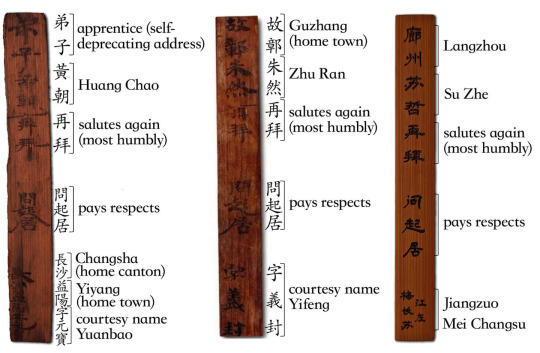
To balance out all the white background product photography, I’ll close with some texture shots:
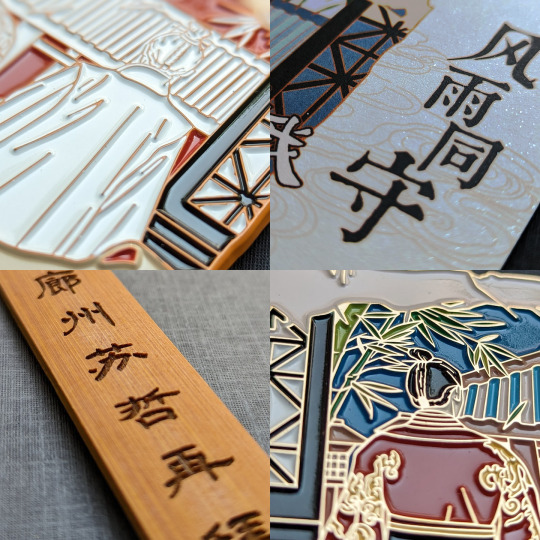
#cost for everything was ¥90 or about $13#overseas shipping not included#先生与我,如同一人#chinese fandom#nirvana in fire#琅琊榜#merch review#long post
81 notes
·
View notes
Text










On Thursday I got to visit the Hong Kong Palace Museum for free thanks to the Art Basel VIP program! As you can see, the museum is massive; plan on spending at least 3 hours there (I was there for almost 4 hours—thankfully the museum had special evening hours yesterday and was open later than usual—and could’ve gone even longer but it was time for dinner). Including a new exhibition featuring over 190 paintings, architectural models, and other artifacts from Yuanmingyuan / the Old Summer Palace, which was looted, destroyed, and burned down by the British and French in 1860 during the Second Opium War. A beautiful exhibit that got me emotional at times. Some photos:
1 - Outside the museum. I had to zoom out to capture the entire building!
2 - The first room of the special exhibition.
3 - People usually associate Yuanming Yuan with its white marble ruins, but the palace was actually colorful.
4 - A maze in the palace.
5 - A view of the exhibition.
6 - A theatrical robe for the role of the Weaver, from the ancient Chinese fable of the Oxherd and Weaver and part of the Double Seventh Festival, dedicated to the stars Altair and Vega.
7 - A seal for one of the theaters, with a double-headed dragon knob.
8 - A fan with a landscape painting and poems on the other side.
9 - Another view of the exhibit.
10 - The museum at night.
More to come!
// (c) Jenny Lam 2024
#chinese history#history#museum#museums#history museum#photography#photos#mobile photography#shot on iphone#travel photography#travel#hong kong#architecture#building#design#city#chinese#china#ancient china#culture
0 notes
Text

‘Faces of Sanxingdui’: Bronze Age Relics Shed Light on Mysterious Ancient Kingdom
A golden face with patinaed turquoise eyes stares out of the darkness. Illuminated around it stand three other bronze heads — some have flat tops, others round — all looked over by a giant bronze statue almost 9 feet high. All have the same piercing, angular eyes.
There’s something about the “Faces of Sanxingdui” — as this collection of sculptures is being billed — that feels both familiar and alien. Currently on display at the Hong Kong Palace Museum, they may appear Mayan or Aztec to the untrained eye, but these over-3,000-year-old sculptures weren’t unearthed anywhere near Mesoamerica’s ancient civilizations. They were discovered on China’s Chengdu Plain, at an archeological dig site called Sanxingdui (which translates as “three star mound”).
Thought to be the largest and oldest site left by the Shu kingdom, a civilization in southwestern China once only hinted at in myths and legends, Sanxingdui was not discovered until the 1920s, when a farmer stumbled across objects while digging an irrigation ditch. The site has since been found to contain the ruins of an ancient city made up of residences, sacrificial pits and tombs enclosed by high dirt walls. Archaeologists from the Sanxingdui Museum say the city was established some 4,800 to 2,800 years ago, until it was abandoned around 800 BC for unknown reasons.

The Chinese government has long promoted Sanxingdui as evidence of the country’s long, uninterrupted history — with the discoveries included in history textbooks for more than a decade. And while thousands of visitors have already flocked to the groundbreaking exhibition in Hong Kong, some analysts suggest that the items are also being used to support the Chinese government’s vision of national identity.
The mysterious and talented Shu
The Shu kingdom, which emerged in the Sichuan basin during the Bronze Age, is believed to have developed independently of the Yellow River Valley societies traditionally considered the cradle of Chinese civilization. Its inhabitants created exquisitely crafted bronze, jade, gold and ceramic objects, depicting fantastical beasts, kings, gods and shamans with bulging eyes and enlarged ears.
Around 120 of the items are currently on display in Hong Kong, and it’s the first time many of these objects, most of which were excavated between 2019 and 2022, have been showcased outside Sichuan province.

Remarkably, the sculptures predate the Terracotta Army, a collection of earthenware statues depicting the armies of China’s first emperor Qin Shi Huang, by at least 1,000 years. Wang Shengyu, an assistant curator at the Palace Museum said the objects are far more advanced, imaginative, and artistic than those being produced anywhere else in China at that time.
“You can tell that it’s very sculptural and very artsy,” Wang said at the exhibition opening, pointing to a roughly 1-foot-tall bronze figure whose fantastical, braided hair extends out to three times the height of its body and, had it not been broken, would stretch much further. “You can imagine how magnificent it was. From above his nose and all the way up, it would’ve been over 1.5 meters (4.9 feet) tall, according to the fragments (archeologists) found. The end of the pigtail is on his shoulder.”
Little is known about the Shu kingdom other than what’s been discovered on the 3.6-square-kilometer (1.4-square-mile) site outside Chengdu. There is no evidence of a written Shu language, and historical literature contains scant information about its culture other than a handful of myths and legends, including a reference to a Shu king called Can Cong whose eyes were said to have protruded — perhaps explaining why so many of the 13,000 relics recovered from the site feature bulging eyes.

After the Shu state was conquered by the Qin dynasty in 316 BC, Shu culture was “buried” under the “mainstream” culture that later emerged on China’s central plain, Chinese authorities wrote in a 2013 UNESCO submission seeking to have Sanxingdui and two nearby archeological sites recognized as World Heritage Sites. They are currently on UNESCO’s “tentative list.”
Since 1986, eight excavated pits at Sanxingdui have yielded giant masks of gods with bulbous, insect-like eyes and protruding ears, mythical creatures with gaping mouths and an almost 4-meter-tall (13-foot) bronze “tree of life” sculpture decorated with ornaments like a Christmas tree. All the items were found shattered, burned and buried, leading experts to believe the pits were used for ritual sacrifices. Some have now been painstakingly re-constructed by archaeologists. “It took 10 years to reconstruct the tree,” said Wang Shengyu, an assistant curator at the museum who helped curate the exhibition.
That tree is not on show in Hong Kong, as it is considered too precious to send abroad, but a section of one of six others discovered and ornaments are on display at the museum, as well as a 3D holographic projection of what experts think it would have looked like – its layers and branches adorned with birds, flowers, fruit, dragons, bells as well as jade and gold foil ornaments. The set are thought to have been part of a theater space.
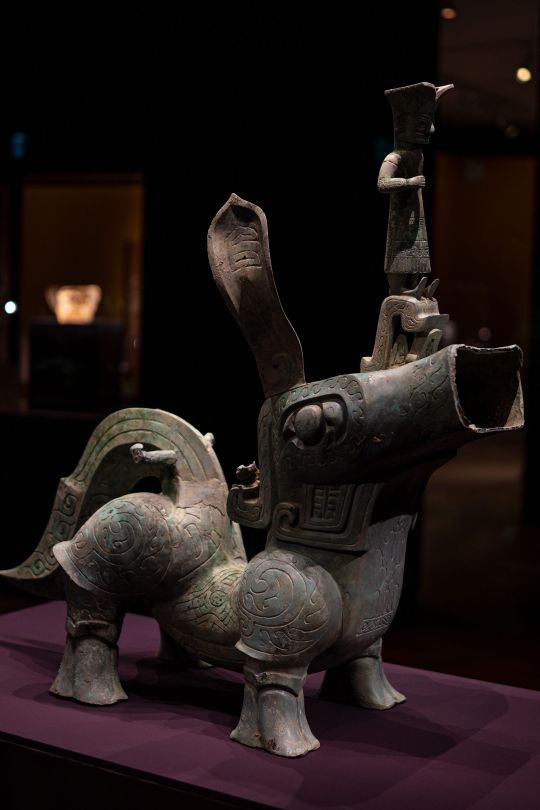
‘Historical myth’ of a continuous civilization
The exhibition places these items in the context of other ancient civilizations and includes the Shu among the many societies to have existed in the country’s “5,000-year history.” According to a press release from organizers, museum and Hong Kong government officials at the opening stressed the “continuity, inventiveness, unity, inclusiveness and emphasis on peace and harmony” of Chinese history.
Henry Tang, chairman of the governing body behind the West Kowloon Cultural District (where the Palace Museum is located) and a former candidate for Hong Kong’s top leadership role, said in a statement that the district and museum are looking to “promote cultural and artistic exchanges between China and the world, ‘tell China’s story well’, and strengthen the public’s cultural self-confidence.”
But the narrative that the Shu kingdom was innately Chinese is contentious, according to Ian Johnson, a senior fellow for China Studies at US think tank, the Council on Foreign Relations.
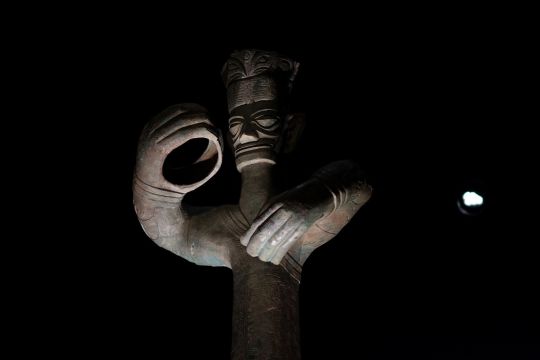
“Over the past few decades, the (Chinese Communist Party) has been trying to push a historical myth that all the peoples who have ever lived inside the current borders of the People’s Republic are ‘Chinese,’” he said over email.
“The basic idea is that the PRC (People’s Republic of China) encompasses people who naturally belong together and therefore, from today’s standpoint, form a nation. Hence any effort to have autonomy or even independence is taboo — it runs against history.”
The People’s Republic of China was established in 1949, and its government has often used China’s continuous history as evidence that ethnic groups such as the Tibetans and the Uyghurs have always belonged to China.
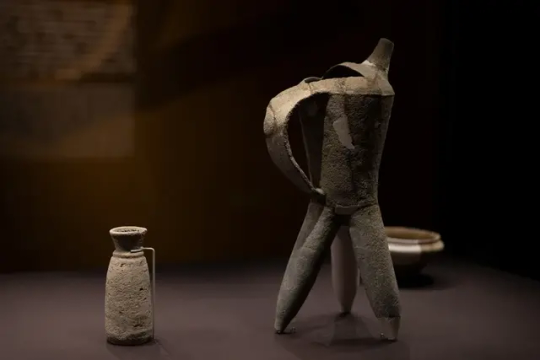
Johnson said that there was little support for the idea that civilizations along the Yellow River had much in common with those in the Sichuan Basin.
“They have commonalities but are not the same — just as ancient Assyrians and Phoenicians and Greeks weren’t the same, even if they shared certain things in common,” he said, adding: “sponsoring these kinds of exhibitions are popular and win the government credit.”
When asked to comment, the Hong Kong Palace Museum said the exhibition was “curated based on academic and archaeological research” and that it reinforces its mission to deepen audiences’ “understanding of the lives and cultures of various regions and ethnic groups as well as exchanges among them in ancient China, which have contributed to the magnificence of China’s civilization and its ‘diversity in unity’ pattern of development.”
By Christy Choi.
#‘Faces of Sanxingdui’: Bronze Age Relics Shed Light on Mysterious Ancient Kingdom#Chengdu Plain#Sanxingdui#Shu kingdom#gold artifacts#bronze artifacts#ancient artifacts#archeology#archeolgst#history#history news#ancient history#ancient culture#ancient civilizations#ancient china#ancient chinese#chinese history#chinese art#long post#long reads
33 notes
·
View notes
Note
A question for you because you seem like one of those people who has watched everything: how did you get started watching bl, and what are your ultimate favorite shows?
Double-barrelled! I'm honoured.
How did I get into BL?
The short answer is that ~2016 the YouTube algorithm served me up Lovesick and I immediately went EXCUSE ME WHAT IS THIS and looked up everything else available and watched literally everything I could get my hands on (which at the time was easy because there was only a handful compared to today, but it still felt like a wealth of content to enjoy).
The longer answer is that I used to be really involved in GL (I was the secretary at the first Yuricon in North America in 2002 or 2003) and then BL manga fandom (was in a scanlation group for awhile) through ~2006? so its extra hilarious that this wasn't my route in; I apparently took a break right before they started making live action versions in Japan. But when I got into Thai BL it was fun rediscovering these tropes in a new medium and through the lens of a new-to-me culture, noticing how they differed and how the genre had matured (and how it hadn't), and on catching up on the stuff out of Japan, seeing some of the manga I read over a decade ago come to life! So I mention this history because it's definitely a part of why I stayed (and probably why the algorithm found me relatively quickly).
I only started tracking things in a spreadsheet in 2020 (and it's not nearly as comprehensive or useful as @absolutebl 's), but I did try to backfill the highlights of what I've seen and I have over 550 rows on there, fwiw. I'm a completionist so I do try to watch everything, though that's getting more and more impossible these days.
Ultimate Favourite Shows
This question is so hard. I know you didn't even give me a limit but you have to understand @lurkingshan, I can't choose favourites, I have a draft top ten list that has been blank for 3 years because I can't commit. Okok. I'm just going to list shows as they come to me (not in any particular order):
Thailand: Until We Meet Again, He's Coming to Me, Diary of Tootsies, WhyRU, Ingredients, Not Me, Secret Crush on You, I Told Sunset About You & I Promised You the Moon, Triage, You're My Sky, Make it Right, La Pluie, My Ride, Bad Buddy, My School President, Laws of Attraction, Moonlight Chicken, Dear Dr I'm Coming for Soul, To Sir With Love/Khun Chai, The Eclipse, Midnight Museum, Lovely Writer... Grey Rainbow [ducks, hides, runs away]
Japan: Doushitemo Furetakunai (no touching at all), Kinou Nani Tabeta (What did you eat yesterday?), Our Dining Table, Takara-Kun and Amagi-Kun, Old Fashioned Cupcake, 7 Days (mon-thurs & fri-sun), His (miniseries & movie), I Want to See Only You, Kieta Hatsukoi/My love mix-up, the Cherry Magic Movie, Life~Senjou no bokura/Love on the Line, 180 Degrees Longitude Passes Through Us, Given (anime is my fave version), Tokyo in April Is..., Cornered Mouse Dreams of Cheese, Utsukushii Kare/My beautiful man
Korea: Our Dating Sim, Semantic Error, The Lover [BL side], Color Rush, Blueming, Cherry Blossoms After Winter, Love Class 2, Made on the Rooftop, Discipline Z, Light on Me, To My Star (yes both seasons), Strongberry (faves are Long Time No See, Confidential Coffee Break, and A First Love Story), Sing My Crush, Just Friends?
Vietnam: Goodbye Mother, Hey! First Love, Nation's Brother, You Are Ma Boy, Follow My Sunshine, FOOLs, Tien Bromance: My Small Family, Love Bill
Philippines: Gameboys, Gaya sa Pelikula, Boys Lockdown, Cheat [warning: horror], Your Home, Better Days
Taiwan: Be Loved in House, My DNA Says Love You, We Best Love (1 & 2), HIStory (Crossing the Line is my fave, and second fave is...Make Our Days Count [ducks, hides, burrows into ground]).
Other: Summerdaze (short from Singapore), Stay Still (Hong Kong), HeHe and He (Hong Kong, final season in progress but s1&2 are so funny) and the bromances/difficult to categorize: Scumbag System, Word of Honor, The Untamed, Guardian, Coffee Prince, Bromance (Taiwanese), Great Men Academy, Mr Queen, Sleuth of Ming Dynasty, SCI Mystery
*deep breath* ok I'm stopping lol narrowing it down any less than this gives me pain so I won't try. Also I'm sure I forgot something obvious (and Tumblr was eating drafts of this at various points). All I can say about this list is it's under 100 and that's the best I could do.
Thanks for the ask, and to anyone who made it this far thanks for reading!
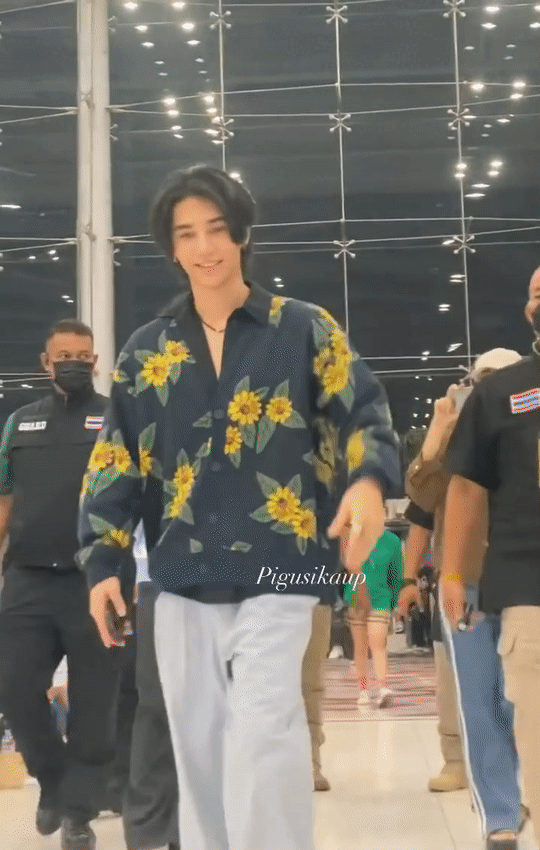
#thank you for the ask!#multi bl#rec list#i remain a parody of myself and unable to choose favourites#thank you for coming to my ted talk#ask game#typed so i can stop thinking it
46 notes
·
View notes
Text








Cynthia Rothrock appreciation post!
Cynthia Rothrock is the World Champion in martial arts Forms and Weapons (1981-1985), earning her the title of “Queen of Martial Arts”. With over 100 competitions, she holds the undefeated worldwide record in martial arts Forms competition. In Weapons competition, she is the first and only woman to win number one in North America, competing with men before a Women’s Division was formed. She holds Black Belts in 7 styles of martial arts with a rank of 8th Dan Grandmaster.
In 1981, Cynthia became the first woman to grace the cover of a martial arts magazine. In 1999, she was one of the first individuals to be inducted into the Martial Arts History Museum’s Hall of Fame. In 2014, she was the first martial artist to be inducted into the International Sports Hall of Fame.
Her first movie, “Yes, Madam,” alongside Michelle Yeoh, broke box office records making her a massive star in Hong Kong. Since then, Cynthia has starred in over 60 films.
She is the producer, writer and star of the upcoming martial arts western, “Black Creek,” and is also running the graphic novel campaign on IndieGoGo right now.
Cynthia Rothrock continues to train, teach, act and inspire with boundless enthusiasm. A true icon! 🔥🖤
#cynthia rothrock#martial arts#martial arts film#graphic novel#world champion#martial arts magazines
8 notes
·
View notes
Text
in the Istanbul airport, about to head out. and I've got to say: even though Turkey has taken a dark political turn, this city is amazing. When you're here it really feels like you're in the center of the world. I know everyone says it's where East meets West or where Europe meets Asia, and that's all true, but it's one thing to say it and another thing to behold it.
When you're walking around you see all these people, speaking many different languages -- some of which I didn't even recognize -- and they're all dressed every which way. Some women are dressed exactly like you'd see in any big American city; some women are wearing hijab; some women are wearing niqab. Mostly the men dress about the same as in the West, which is 😬, but what can you do.
But like. Everyone is here. People from New Zealand and Yemen and Hong Kong and Senegal and Colombia and Brazil. Older ladies from I don't know where, but somewhere in MENA, asking me directions in French. I'm sitting in the airport and I see planes going to Iran and Iraq, which must be extremely normal here but which is a very new sight to me, a US American. Everyone is here, from all corners of the world.
And having just come from Amsterdam, it feels a little extra wild, because of the tulips. We went to the tulip museum there and learned that even though Westerners associate tulips with the Dutch, they came to the Netherlands via the Ottomans. The flower is from central Asia, near Tibet, originally. The Turkish tribes carried them westward, along the Silk Road, and once the Ottomans conquered Constantinople they planted tons and tons of tulip gardens. The tulip became a symbol of the sultanate, because it resembles a turban. Dutch diplomats and traders became obsessed with them in Constantinople and brought them back to the Netherlands. So it was kind of wild to learn all that about tulips in Amsterdam, to see all these tulip-themed things that are now considered to be symbols of the Dutch, and then to fly over to Istanbul and see how much of this city is covered in tulip imagery as well. In some of the palaces, some of the tulip-themed tile work is actually Delftware -- made in the city of Delft, in the Netherlands. It's such a clear throughline, tracing back the history of trade between these two places. It's really remarkable. Amsterdam, connected to Tibet, via the Silk Road and the Turkish tribes, meeting up in this unspeakably gorgeous city of Istanbul.

26 notes
·
View notes